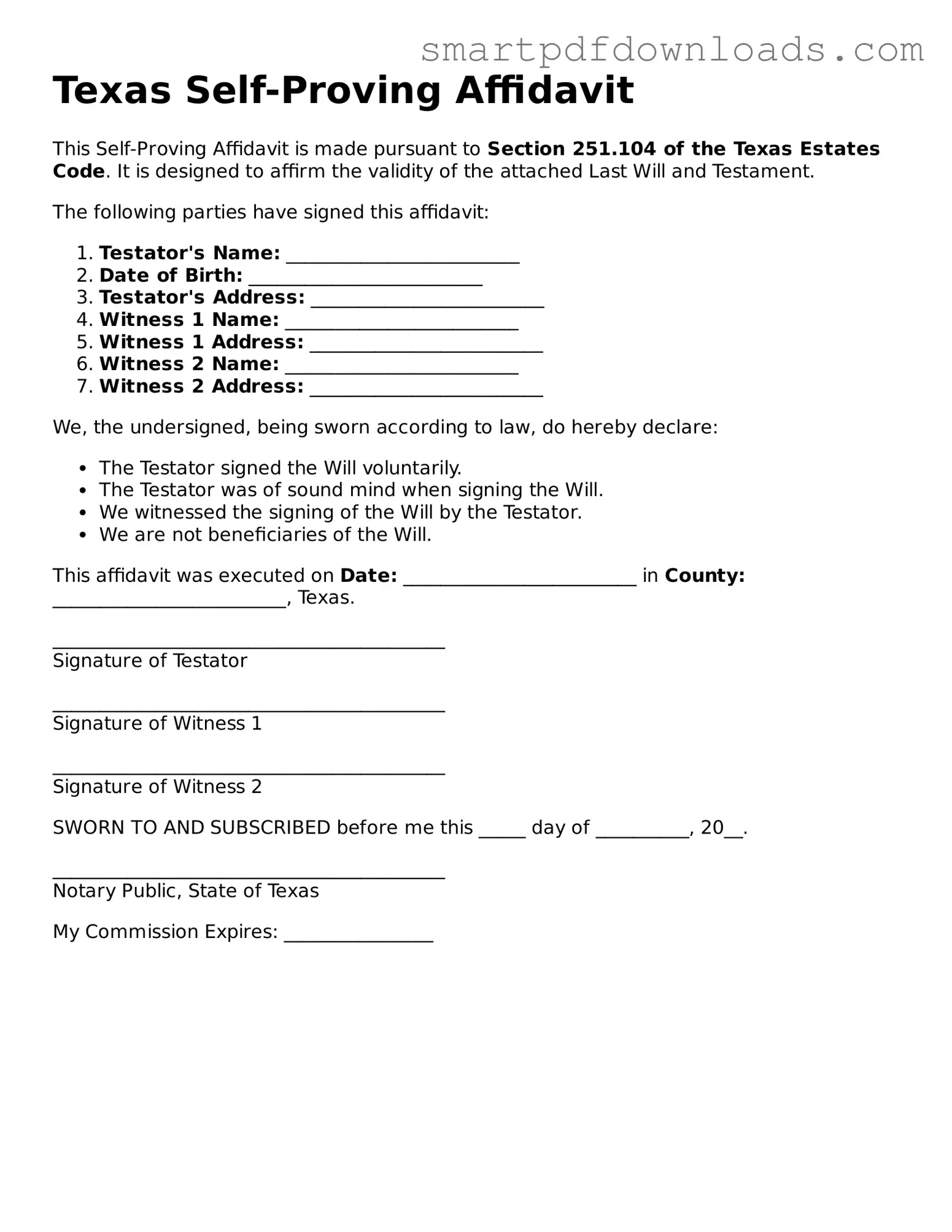Texas Self-Proving Affidavit
This Self-Proving Affidavit is made pursuant to Section 251.104 of the Texas Estates Code. It is designed to affirm the validity of the attached Last Will and Testament.
The following parties have signed this affidavit:
- Testator's Name: _________________________
- Date of Birth: _________________________
- Testator's Address: _________________________
- Witness 1 Name: _________________________
- Witness 1 Address: _________________________
- Witness 2 Name: _________________________
- Witness 2 Address: _________________________
We, the undersigned, being sworn according to law, do hereby declare:
- The Testator signed the Will voluntarily.
- The Testator was of sound mind when signing the Will.
- We witnessed the signing of the Will by the Testator.
- We are not beneficiaries of the Will.
This affidavit was executed on Date: _________________________ in County: _________________________, Texas.
__________________________________________
Signature of Testator
__________________________________________
Signature of Witness 1
__________________________________________
Signature of Witness 2
SWORN TO AND SUBSCRIBED before me this _____ day of __________, 20__.
__________________________________________
Notary Public, State of Texas
My Commission Expires: ________________
